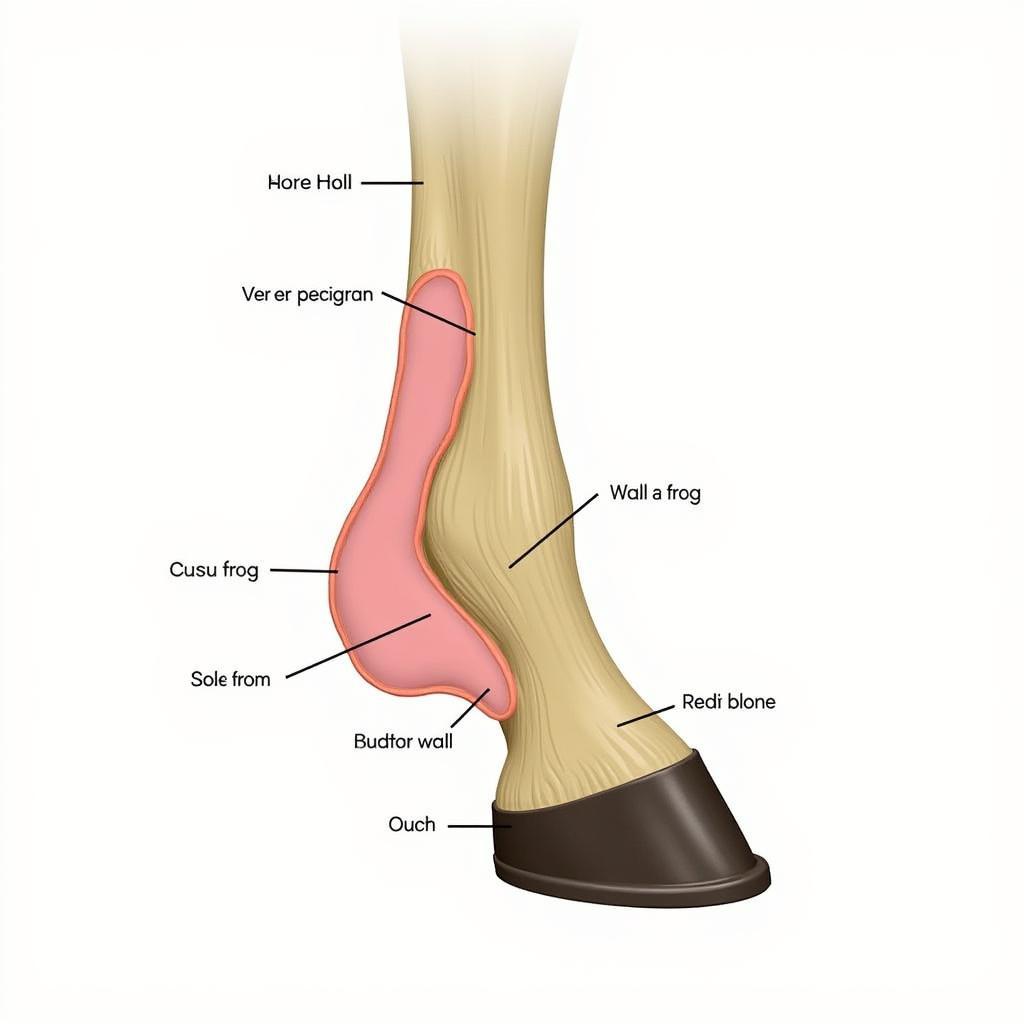Horses, with their majestic presence and powerful physique, have captivated humans for centuries. Understanding the intricacies of their anatomy is not only fascinating but also essential for any horse owner, rider, or enthusiast. This comprehensive guide delves into the world of horse body parts, equipping you with the knowledge to appreciate these magnificent creatures better.
Exploring the Equine Anatomy
From the tip of their ears to the bottom of their hooves, horses are a testament to nature’s design. Each body part plays a crucial role in their movement, balance, and overall well-being.
The Horse’s Head: A Sensory Hub
A horse’s head houses its primary sensory organs, enabling it to navigate its environment effectively. The large, expressive eyes provide a wide field of vision, essential for detecting predators and navigating terrain. Their sensitive ears, capable of rotating almost 180 degrees, pinpoint the source of sounds. The nostrils, with their delicate lining, allow the horse to breathe and perceive scents. Understanding the anatomy of a horse’s head is key to recognizing signs of illness or discomfort.
The Powerhouse: The Horse’s Body
The horse’s body is a marvel of strength and agility. Its powerful legs, ending in single-toed hooves, are designed for speed and endurance. The long, arched neck provides balance and allows for a wide range of head movement. The strong back supports the rider and transmits power from the hindquarters to the front. Recognizing the different parts of a horse’s body, from the withers to the flank, is crucial for saddle fitting, grooming, and overall care.
The Importance of Hooves
 Internal Structure of a Horse's Hoof
Internal Structure of a Horse's Hoof
Often overlooked, a horse’s hooves are their only point of contact with the ground. These complex structures, made of keratin, act as shock absorbers and provide traction. Understanding the different parts of the hoof, including the wall, sole, and frog, is crucial for maintaining their health. Regular farrier care, proper trimming, and attention to any signs of lameness are essential for keeping your equine companion sound.
Recognizing Health and Lameness
Knowledge of horse body parts is crucial for identifying and addressing health concerns. By observing your horse’s posture, gait, and overall demeanor, you can detect subtle changes that might indicate pain or discomfort.
“Early detection is key,” says Dr. Emily Carter, a renowned equine veterinarian. “Knowing your horse’s normal anatomy allows you to spot deviations that could signal a problem. A slight head tilt, an uneven stride, or even reluctance to move can indicate a serious issue that requires immediate attention.”
Conclusion
Understanding the intricacies of horse body parts is an ongoing journey for every horse lover. From the graceful arch of their neck to the powerful thrust of their hindquarters, each part contributes to the magnificence of these creatures. By continually expanding your knowledge of equine anatomy, you can provide the best possible care for your equine companion, ensuring their health, happiness, and longevity.
FAQs about Horse Body Parts
-
What is the purpose of a horse’s chestnuts? Chestnuts are small, hardened calluses found on the inside of a horse’s legs. While their exact function remains unknown, they are believed to be remnants of an evolutionary ancestor.
-
How many bones are in a horse’s skeleton? A horse’s skeleton typically consists of 205 bones, providing the framework for their impressive strength and agility.
-
What is the difference between a horse’s withers and its croup? The withers are the highest point of a horse’s back, located at the base of the neck. The croup is the rounded area of the hindquarters, extending from the point of the hip to the tailhead.
-
Why is it important to understand a horse’s hoof anatomy? The hoof is a complex structure that requires specialized care. Understanding its anatomy helps in identifying potential problems, ensuring proper trimming, and maintaining overall hoof health.
-
How can I learn more about specific horse body parts? Resources like veterinary textbooks, reputable online articles, and consultations with equine professionals can provide further insights into equine anatomy and health.
Need More Help?
Have questions about your horse’s health or need advice on equine care? Don’t hesitate to contact us. Our dedicated team at Justus Horses USA is here to assist you 24/7. Call us at 0772127271, email us at [email protected], or visit us at QGM2+WX2, Vị Trung, Vị Thuỷ, Hậu Giang, Việt Nam. Your horse’s well-being is our priority.
Explore our website for more insightful articles:
- Learn about the importance of a pulling breast collar for horses.
- Discover the challenges of a tooth root abscess horse and how to care for your equine companion.
- Find the perfect miniature horse turnout blankets to keep your smaller equine friends warm and comfortable.
- Delve into the fascinating world of work horse construction and the role of horses in building our world.
- Access a comprehensive diagram of horse body parts for a visual guide to equine anatomy.